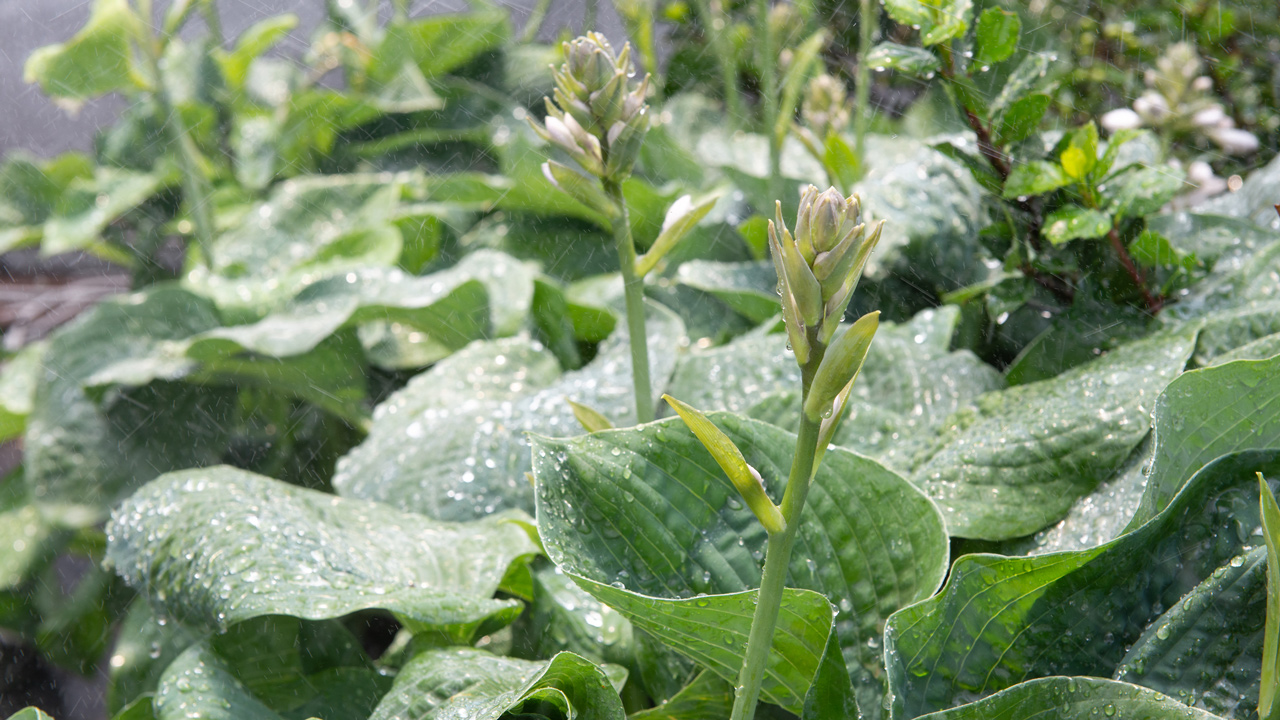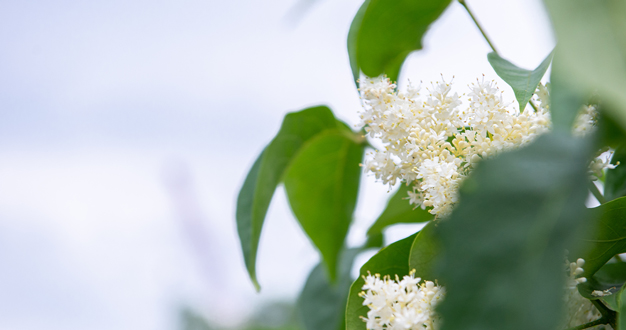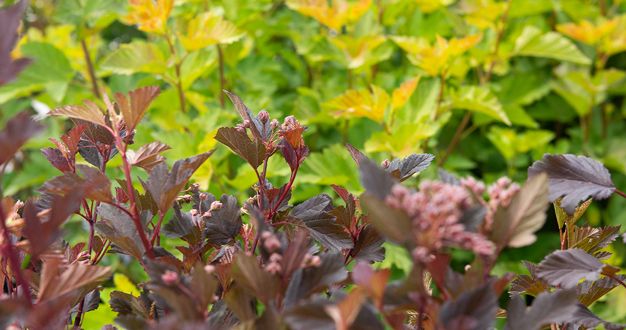
If you like the idea of having a landscape that’s not only beautiful but also good for our community and the environment, you might consider adding a rain garden to your space. Rainfall is essential for healthy plant growth, but in an urban area – where much of our landscape is composed of buildings and concrete – heavy rainfall can lead to big problems as it runs off into drains and into our local streams, rivers, and lakes.
Rain gardens provide a beautiful and practical way to let more water infiltrate the soil in our own landscapes where it can do the most good. Here we share how a rain garden works, the benefits it can bring, and some of the plants that work well in a rain garden.
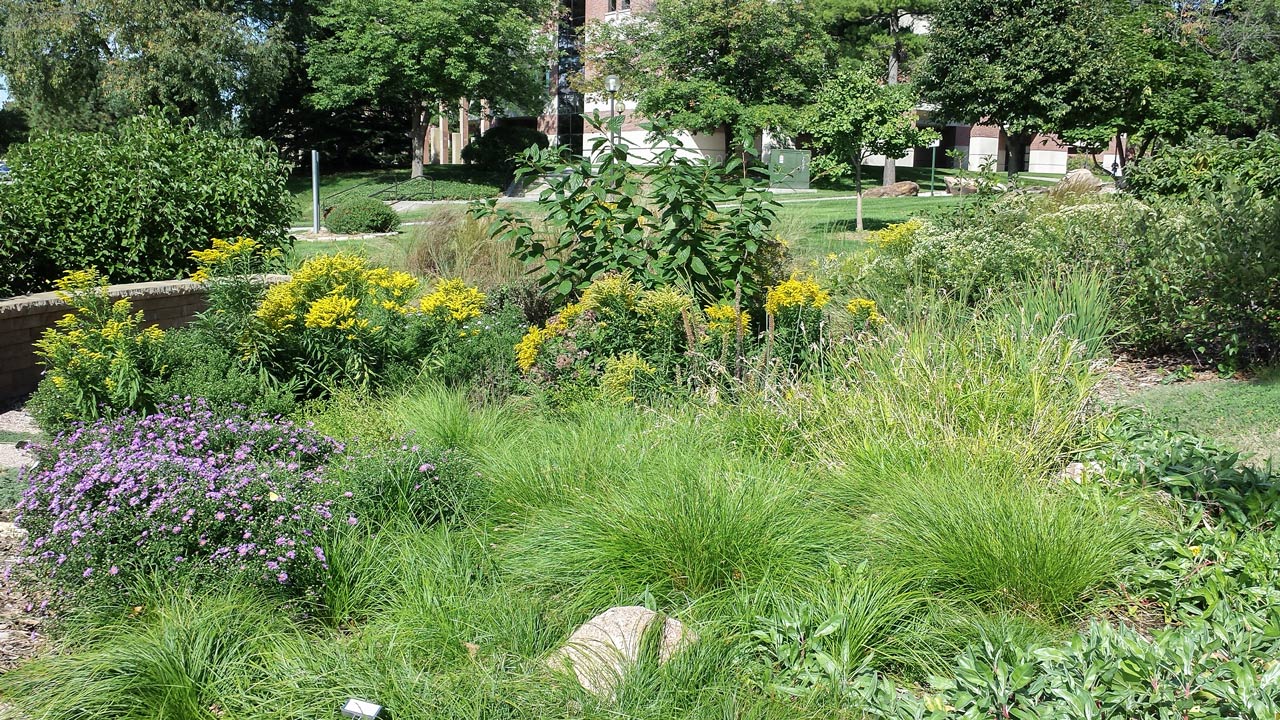
What Does a Rain Garden Look Like?
A rain garden is an intentional landscape design that collects water from a rainfall and stores it for no more than a day or two as the water soaks into the soil. And using a rain garden to manage the flow of water through your landscape is easier than you might think. It can be as simple as adding a small grouping of shrubs and perennials in a depressed area near the end of a long drainpipe coming from your house. The depressed area should sit several inches lower than the surrounding landscape – with a rim of slightly raised soil around the edge to help hold the water before it soaks into the soil. And for cases when continued, heavy rainfall brings more water than your rain garden can hold, you’ll want a place where extra water can flow out of the rain garden if needed. Just be sure to plan for your rain garden to be at least ten feet from your home so water isn’t directed toward the foundation.
A rain garden can also be located where it receives water from a sidewalk or parking lot. Or it can be a larger system of rain gardens and swales that direct the flow of water across a broader landscape. A rain garden can be informal with curving edges, waving grasses, and prairie-like variety. Or it can be more formal in style too – it’s up to you. As long as plants and topography are working together to intercept rainfall with the intention of directing it downward into the soil rather than into a drain, that’s a rain garden, and it’s a benefit to the community and the environment.

Community-Wide Benefits
In their book Rain Gardens, authors Nigel Dunnett and Andy Clayden use the word “bioretention” to describe the idea behind using a rain garden to slow water runoff and keep rainfall on site. Bioretention seeks to work with water’s presence in the landscape – even celebrating it – instead of fighting to funnel it off a property as quickly as possible. Practicing bioretention by planting a rain garden has several benefits for your landscape and the community.
- During periods of heavy rainfall, rain gardens help reduce the amount of water flowing to streams, rivers, and lakes that may already be facing problems of flooding.
- Rain gardens decrease pollution by keeping fertilizers and other garden chemicals where we use them rather than letting them flow into natural bodies of water.
- The need for watering your landscape can be reduced as rain gardens cause water to soak further into the soil, which promotes deeper, healthier root systems for plants.
- The amount of energy used for air conditioning may be reduced because rain gardens can help maintain a more pleasant microclimate near your home.
- Rain gardens have plants – and plants are much more attractive than drain spouts and gutters.
- And because many of the plants that work best in rain gardens are native species, rain gardens can provide incredible value to local wildlife.
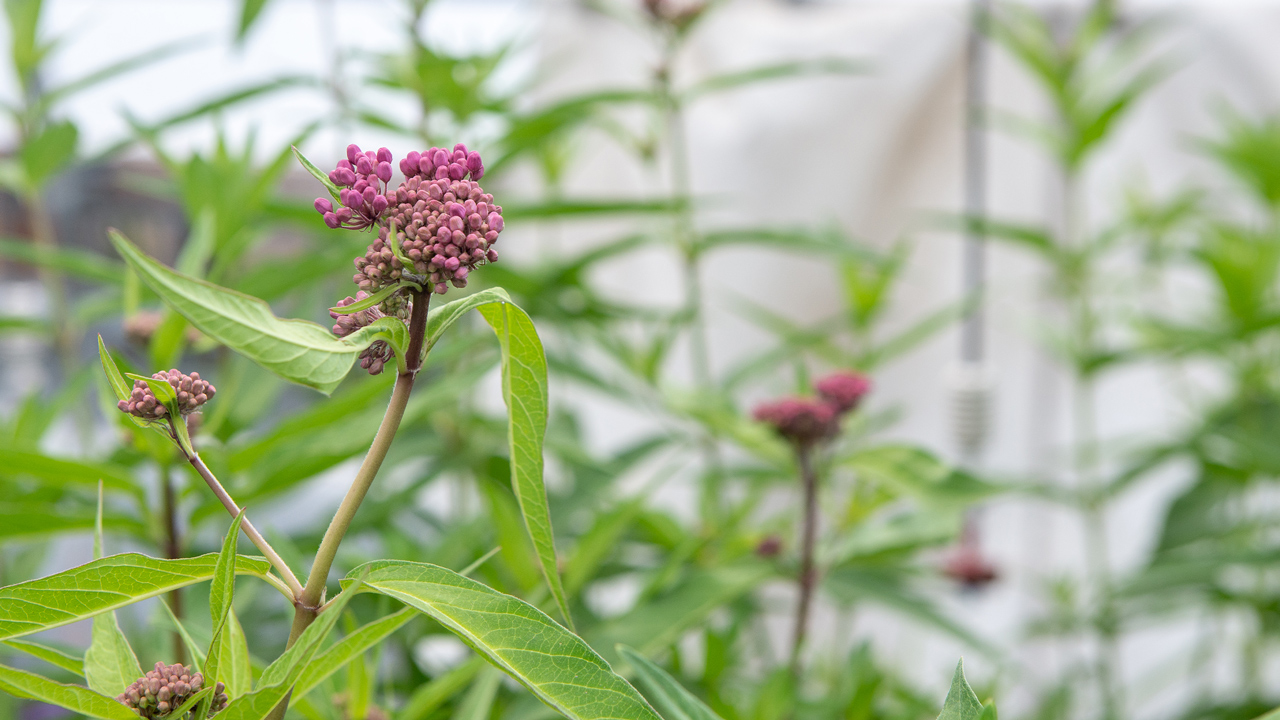
Native Plants
With cold winters, hot summers, and dry periods suddenly interrupted by melting snow or torrential thunderstorms, our Midwest climate is pretty variable. So a rain garden needs to be adaptable to everything from dry soil to temporary standing water – especially those plants living in the lowest part of the rain garden. And native plants are particularly suited to this. According to Steve Rodie, Ted Hartsig, and Andy Szatko, authors of Sustainable Landscapes: Rain Gardens, Bioswales, and Xeric Gardens, it’s the deep root systems of many native plants that help them thrive in both wet and dry conditions.
As the authors point out, native plants are also good for the soil. As their extensive roots push through the soil, they create spaces that increase the soil’s ability to hold moisture and drain extra water. Non-native plants can be good choices for rain gardens too – as long as they’re deep-rooted and adaptable to both dry and wet conditions.



Choosing Plants for a Rain Garden
Plants in the bottom of the rain garden need to be the most adaptable to extremes. They’ll experience more periods of wet soil or temporary flooding than those on the sides or around the edge of the depression. Here we list some of our favorite adaptable rain garden plants for sun or shade.
Full/Part-Sun
- Grasses such as switchgrass, big bluestem, Indian grass, and feather reed grass, plus many sedges
- Flowering perennials including purple coneflower, turtlehead, iris, joe-pye weed, swamp milkweed, bee balm, liatris, lobelia, and rudbeckia
- Shrubs such as smooth hydrangea, redtwig dogwood, elderberry, shrub rose, and Virginia sweetspire
Shade
- Ferns such as lady fern, cinnamon fern, and ostrich fern
- Flowering perennials including hosta, wild geranium, astilbe, turtlehead, ligularia, primrose, and viola
- Shrubs such as dwarf honeysuckle, smooth hydrangea, and Virginia sweetspire
Protect Our Water
Rain gardens are a great way to conserve moisture in our landscapes and help reduce the issues runoff can cause downstream. For a more extensive guide and other resources to create your own rain garden, visit UNL Water. Or find other ways you can help reduce stormwater runoff and protect our natural water ways at Omaha Stormwater. And if you’d like to see some of our favorite plants for a rain garden, take a walk through our Nursery Yard and talk with our team.
And a special shout out to Steven Rodie and David Shelton of University of Nebraska Extension for sharing their photos of successful rain gardens.


